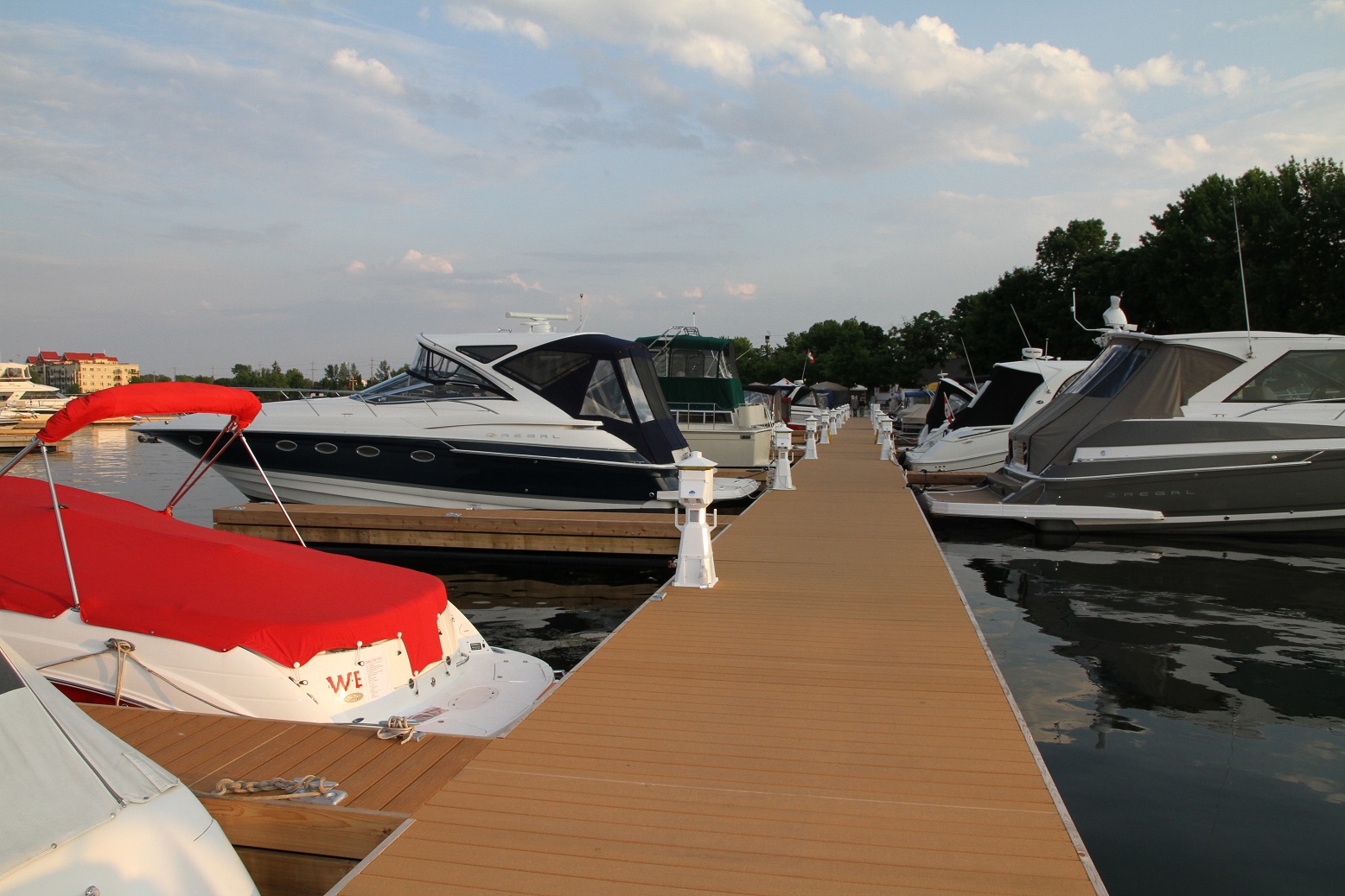
Hot Dock: New Decking Options Confront Heat Issues for Composites
Published on April 30, 2018Editor’s Note: Wooden decking has been a staple for marina construction and renovations for years. It is consistently the top choice for its cost and availability, but is often high maintenance. Concrete and aluminum products have risen in popularity, as alternatives to splintering wood and high maintenance. Today, marina owners and operators can choose a wood-plastic composite alternative. Marina Dock Age magazine talked with Brent Gwatney, senior vice president of sales for MoistureShield, about some newer composites that are offering benefits like heat-resistant materials, customizable patterns and environmentally sensitive materials.
Q: Why does traditional composite decking get so hot? What materials can combat this?
The dense structure of traditional composite decking readily absorbs heat, resulting in a hot walking surface that can be uncomfortable for bare-foot boaters.
To address this issue, manufacturers now have developed a way to reduce the heat absorption of composites to create comfortable decking options for marina users, such as MoistureShield’s CoolDeck® technology. MoistureShield’s in-house R&D team explored many potential solutions – including additives, surface treatments and more – to dissipate heat. After multiple iterations, we created a proprietary product formulation and manufacturing process that optimizes heat reflection, so the deck boards absorb up to 35 percent less heat than conventional capped composites in similar colors – for cooler, more comfortable decks.
Q: How are capped composites different from a fully encapsulated product?
Like all wood products, the wood fibers in wood-plastic composite decking can absorb moisture if they’re not fully encapsulated in plastic. As this is technically difficult to do, composite manufacturers developed protective caps to keep moisture away from their boards. But, cutting or screwing down the boards penetrates the cap and provides a pathway for moisture intrusion.
From our start in the late 1980s, MoistureShield pioneered a way to fully encapsulate wood fibers in protective plastic, so our boards have always been moisture-resistant to the core. They can be installed on the ground, in the ground, or under water without voiding the warranty.
Our market research showed that people love the beauty and durability of modern composites, but their number one complaint is composite decking getting too hot in the summer. We spent several years developing a solution, and introduced our CoolDeck technology in several of our decking product lines in 2017.
MoistureShield also offers capped products, but in our case, the cap isn’t to protect against moisture, but to provide other benefits like resisting fading and staining, and creating a more beautiful surface.
Q: What kind of maintenance is required for premium decking like this?
Like all of our composite decking, these products don’t need to be painted, stained or sealed. To keep composite decking looking its best, we recommend not allowing dirt or debris to build up. A simple sweep or using a leaf blower will do the trick. Once or twice a year, or more, marinas should use a commercially available deck cleaner. Products like Olympic Premium Deck Cleaner are effective for quickly removing mold.
Q: How else is the decking environmentally sensitive?
MoistureShield decking is made with 95 percent recycled technology. Twenty-five percent of that is post-consumer recycled content – the stuff you put in your recycling bin at home, like milk jugs, plastic grocery sacks and detergent bottles. Our use of recycled content helps keep plastic waste out of landfills, plus no trees are cut down to make our decking.
Q: What other advances are available that make composite decking aesthetically pleasing?
At one time, alternatives to wood decking were primarily artificial looking materials like shiny vinyl. Now, wood alternatives such as modern composites offer a rich, warm look with realistic wood-grain details. With recent technology advances, composite manufacturers have established ways to vary the color tones of deck boards to resemble traditional wood. Purposefully designed with patterns that are more variable, today’s composite boards achieve the natural coloring and grain of wood deck boards.
Q: What’s next for composite decking?
The technology behind composites with vibrant colors and striking visual patterns that emulate exotic woods will eventually enable marina operators and other commercial facilities to customize the surface appearance of deck boards. This is a new method for finishing the surface of composite deck boards will allow architects, contractors and others to order personalized finishes for their decking, which could be a powerful form of branding for marinas.
Q: Why did Orillia Marina on Lake Ontario use composite decking?
Moisture resistant composite decking works great in hot climates, but it can also be beneficial in northern regions. Stretching 240 miles from Lake Huron to Lake Ontario, the Trent Severn Waterway attracts thousands of boaters each year. The self-proclaimed “Jewel of the Trent,” the Port of Orillia Marina on the waterway’s Lake Couchiching is a popular fishing spot. As Orillia experiences 161 days of rain or snow each year, moisture-resistant decking was a key consideration when the city-owned port built a new 220-slip marina.
“The city wanted a 40-year plus service life for the dock system, with minimal maintenance,” said contractor Jordan Kropf, marine sales for Kropf Industrial of Sequin, Ontario. “That requirement eliminated traditional wood. However, they also were looking for something that had a rustic, northern cottage look and feel – not a panel or grating. MoistureShield fit the bill as an attractive product that offers the required service life and simple maintenance.”
| Categories | |
| Tags |






